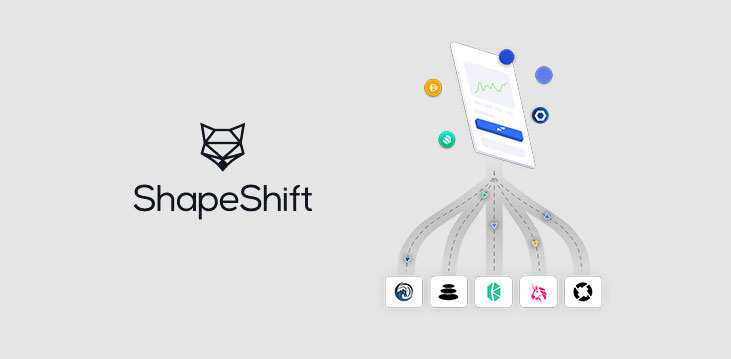In order to better protect users while increasing transparency, ShapeShift, a non-custodial cryptocurrency exchange, today announced it has integrated decentralized exchange protocols into its platform.
Now, ShapeShift’s customers will be able to trade directly with these external protocols, rather than trading with ShapeShift as an intermediary, for an easy and seamless user experience. This change means that ShapeShift customers will no longer need to provide personally identifiable documentation to meet “Know Your Customer” (KYC) regulatory requirements for trading, giving customers greater privacy, security, and transparency over their order flow.
Features
Ethereum and ERC20 assets are now available for decentralized trading through ShapeShift’s interface. Bitcoin will be added in Q1 2021 (native BTC, non-wrapped). By using ShapeShift to trade through DEX protocols, users get the best rates across multiple venues and earn FOX tokens on every trade.
Over the past year, decentralized exchanges—which are software protocols for individuals to trade transparently and without any intermediary—have grown in popularity. They give users unprecedented auditability and control over their digital assets, offer generally lower fees, and reduce counterparty risk.
“The pace of innovation in decentralized technology is inspiring,” said Erik Voorhees, CEO of ShapeShift. “These borderless, open source projects have created a far safer user experience, so we’ve decided to integrate them into ShapeShift’s platform going forward.”
The change enables ShapeShift customers to access deep digital asset liquidity across more than a thousand new assets and through multiple decentralized exchanges for superior pricing. Because ShapeShift is no longer acting as any form of financial intermediary or counterparty, this new, frictionless UX frees users from having to provide personal, private information.
“Centralized exchanges are black boxes: there is no way to audit them from the outside. You have to trust the operators of that exchange and any other party that can access that data, and that trust is often breached,” said Voorhees. “Our goal is to protect people and bring transparency to the financial system. This is open-source finance.”
